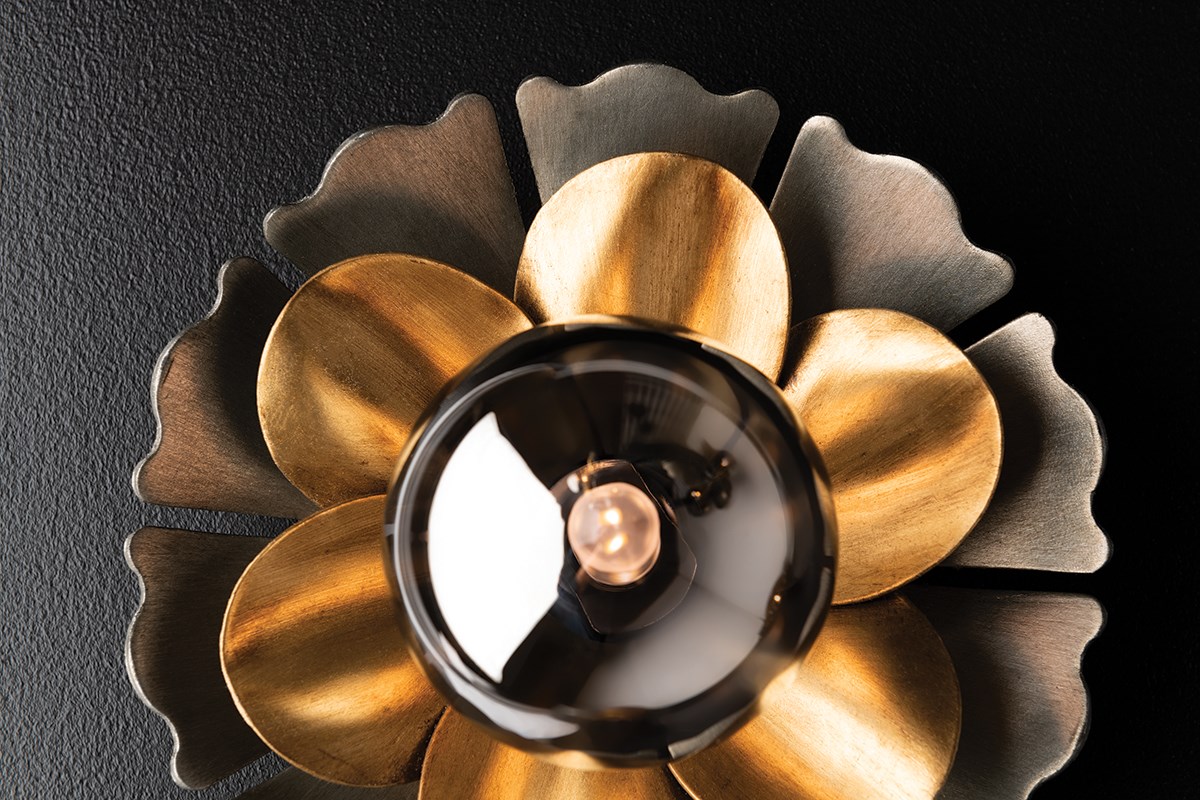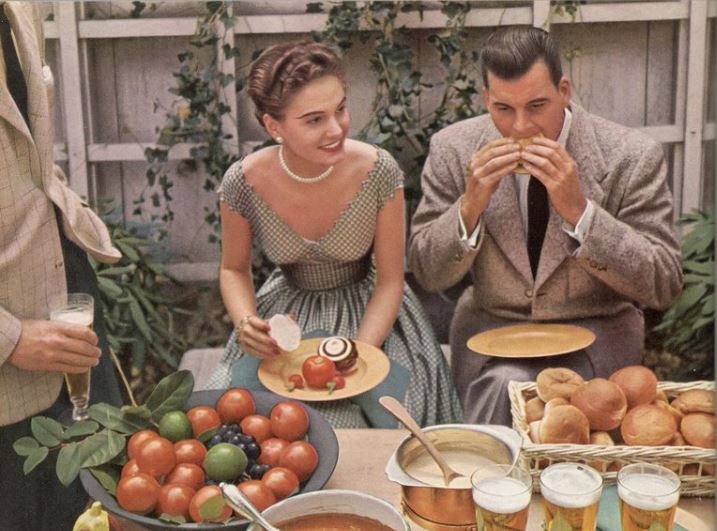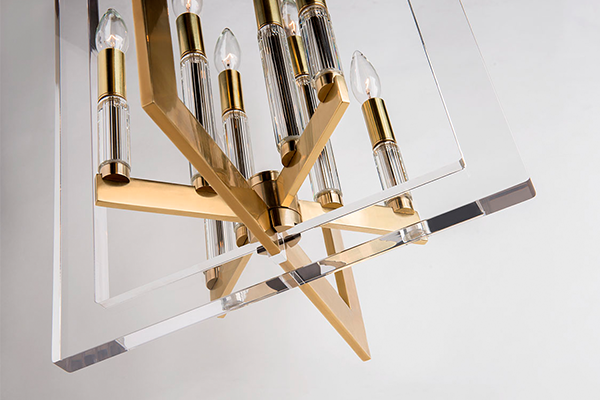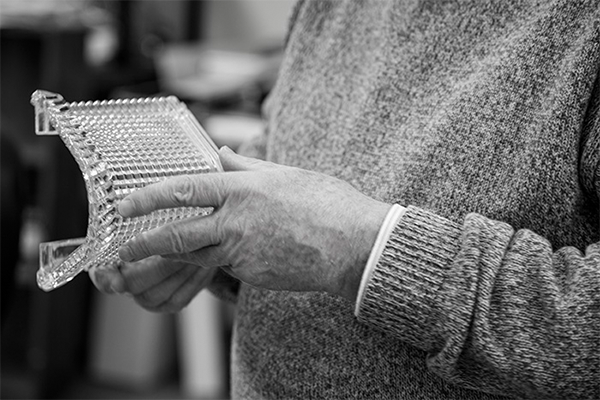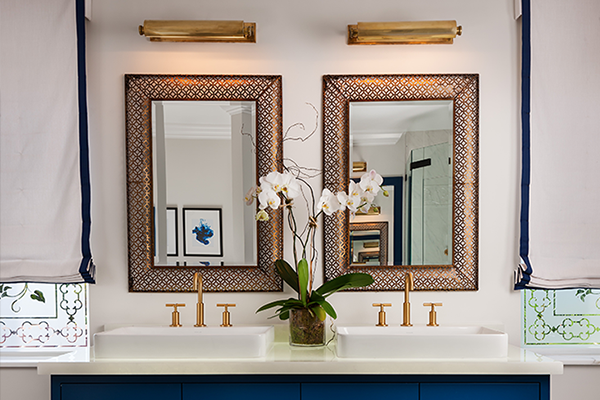1. Marcel Breuer: Wassily Chair + Atomic

The Chair: As contemporary as it seems, the Wassily chair (named for the painter, Wassily Kandinsky) dates back to the Modernist period, 1926. Hungarian architect—and essential member of the Bauhaus design movement—Marcel Breuer crafted the chair from bent tubular steel and eisengarn, materials largely unused in furniture design at the time. Streamlined and pared back, the chair now stands as an ode to early German minimalism and a mainstay in interior design.
The Light: Atomic approaches mid-century modern styling with contemporary sensibility. Constructed from solid brass and aluminum, the sculptural series features laser-cut blades finished in Polished Brass or Polished Nickel with Matte Black, radiating from a gleaming circular center. The LED collection is crafted entirely in the USA.
The Pair: Together, the Wassily chair and Atomic collection combine two waves of modern design into a cohesive look.
2. Eero Aarnio: Ball Chair + Apogee

The Chair: The Ball Chair entered the design world in 1963, materializing from the mind of Finnish designer Eero Aarnio. Aptly named, the Ball Chair—intended to be a “room within a room”—serves as a sphere with seating scooped out of the center, balanced on a short pedestal. Originally upholstered in red, the chair is now offered in a variety of colors.
The Light: Apogee is a pendant comprised of orbiting handworked iron bands with alternating depth and dimension. The glass orb at the nucleus of Apogee is powered by a high-performance LED, which casts glowing light, yet can be controlled to create any ambience when used with a standard incandescent dimmer switch. The contrast between the bronze, polished steel, and gold leaf finishes adds fresh appeal to the retro modern quality of the piece and enhances the notion of depth.
The Pair: When paired, the Ball Chair and Apogee carry a spherical theme all the way through while retaining a sense of cutting-edge appeal.
3. Verner Panton: Panton + Tides

The Chair: Verner Panton, an exceptionally influential Danish designer whose work was widely renowned in the 1960s and 1970s, marketed the iconic Panton Chair in 1967. The S-shaped, single form chair quickly gained acclaim with its seemingly organic curves and unconventional body. Quintessential to the 1960s Space Age appeal (during the time of the Pop Art movement), the Paton Chair is now synonymous with modernist style.
The Light: With delicate curves that imply movement, Tides expresses simplicity. Made of handworked iron and finished in textured white, its wave-like form and feel of motion adds an airy sense of relaxation to any space. Tides is ideally suited for open spaces such as sun rooms or grouped in large outdoor living areas.
The Pair: Coupled, the Panton chair and Tides stand as monochromatic, organically styled items that bring modern curves to the interior.
4. Arne Jacobsen: Egg Chair + Dragonfly

The Chair: With the laundry list of historic designs from Arne Jacobsen, it’s unsurprising that his Egg Chair makes the list. Unveiled in 1958, the curvaceous seat quickly became a staple of Danish furniture design. Formed of polyurethane foam, fiberglass and aluminum and upholstered with fabric or leather, the chair is as robust as it is aesthetically appealing.
The Light: Dragonfly is a unique and dynamic Sputnik design. Radiating aluminum blades in a warm satin leaf finish are attached to a central hub via stems and holders with decorative rivets. The rich finish, which is created from a silver leaf stained gold, creates refraction, causing the blades to pop. Optional capsule-shaped early electric lamps also radiate from this central intersection finished in deep bronze.
The Pair: Coming out of space-inspired times, the Egg Chair and Dragonfly represent a bygone era with undeniable style.
5. Ray and Charles Eames: Lounge Chair and Ottoman + Ace

The Chair: A symbol of sophisticated comfort, Ray and Charles Eames released the Lounge Chair and Ottoman in 1956. Crafted from soft leather and molded wood, the chair defined functional art pieces of the 1950s and set the bar for today’s loungers. Now a go-to for offices, country clubs and resorts, the Lounge Chair and Ottoman remains relevant.
The Light: Ace is a mid-century modern delight. Gloss opal globes radiate from a central satin brushed brass orb, held in place by handworked iron arms in dark, textured bronze. Each arm is a piece of folded flat bar material, going from narrow to wide, with fabric cord running on the inside. The cord intentionally comes up and out of the globes to evoke a retro feel.
The Pair: Mid-century and timeless, the Eames Lounge Chair and Ottoman and Ace pendant give a sophisticated vintage feel to today’s homes.



